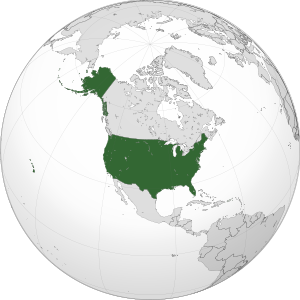LGBT rights in the United States
LGBT rights in the United States have evolved significantly over time, reflecting broad social changes and shifts in public opinion. The history of LGBT rights in the U.S. is marked by a struggle for equality, with milestones including the decriminalization of homosexuality, the recognition of same-sex marriage, and protections against discrimination.
History[edit | edit source]
The history of LGBT rights in the United States can be traced back to the late 19th and early 20th centuries, when homosexuality was largely considered a criminal offense or a mental illness. The first major shift occurred in 1969 with the Stonewall Riots, a series of spontaneous demonstrations by members of the LGBT community in response to a police raid at the Stonewall Inn in New York City. The riots are widely considered the catalyst for the modern LGBT rights movement.
In the decades that followed, significant legal and social progress was made. The American Psychiatric Association declassified homosexuality as a mental disorder in 1973. The 1980s and 1990s saw the emergence of the HIV/AIDS epidemic, which significantly impacted the LGBT community and brought increased visibility and urgency to the fight for LGBT rights.
Legal Milestones[edit | edit source]
- Decriminalization of Homosexuality###
The U.S. Supreme Court's landmark decision in Lawrence v. Texas (2003) invalidated sodomy laws in the United States, effectively decriminalizing homosexuality nationwide.
- Same-Sex Marriage###
The legal status of same-sex marriage in the United States evolved through state-level decisions before being recognized nationwide by the Supreme Court in Obergefell v. Hodges (2015), which held that the right to marry is guaranteed to same-sex couples by both the Due Process Clause and the Equal Protection Clause of the Fourteenth Amendment.
- Anti-Discrimination Protections###
While there is no comprehensive federal law protecting LGBT individuals from discrimination, several states and localities have enacted laws prohibiting discrimination based on sexual orientation and gender identity in employment, housing, and public accommodations. The Supreme Court ruling in Bostock v. Clayton County (2020) affirmed that Title VII of the Civil Rights Act of 1964 protects employees against discrimination because of their sexual orientation or gender identity.
Challenges and Controversies[edit | edit source]
Despite significant progress, LGBT individuals in the United States continue to face challenges and discrimination. Issues such as transgender rights, particularly regarding access to bathrooms and healthcare, remain contentious. Additionally, the rise of religious freedom laws has sparked debate over their potential to enable discrimination against LGBT individuals under the guise of protecting religious beliefs.
Current State and Future Directions[edit | edit source]
The landscape of LGBT rights in the United States continues to evolve, with ongoing legal battles, shifts in public opinion, and advocacy efforts shaping the future of equality. The movement's focus has expanded to include a broader spectrum of issues affecting the LGBT community, including health care, youth homelessness, and the intersectionality of LGBT rights with other social justice movements.
Search WikiMD
Ad.Tired of being Overweight? Try W8MD's physician weight loss program.
Semaglutide (Ozempic / Wegovy and Tirzepatide (Mounjaro / Zepbound) available.
Advertise on WikiMD
|
WikiMD's Wellness Encyclopedia |
| Let Food Be Thy Medicine Medicine Thy Food - Hippocrates |
Translate this page: - East Asian
中文,
日本,
한국어,
South Asian
हिन्दी,
தமிழ்,
తెలుగు,
Urdu,
ಕನ್ನಡ,
Southeast Asian
Indonesian,
Vietnamese,
Thai,
မြန်မာဘာသာ,
বাংলা
European
español,
Deutsch,
français,
Greek,
português do Brasil,
polski,
română,
русский,
Nederlands,
norsk,
svenska,
suomi,
Italian
Middle Eastern & African
عربى,
Turkish,
Persian,
Hebrew,
Afrikaans,
isiZulu,
Kiswahili,
Other
Bulgarian,
Hungarian,
Czech,
Swedish,
മലയാളം,
मराठी,
ਪੰਜਾਬੀ,
ગુજરાતી,
Portuguese,
Ukrainian
Medical Disclaimer: WikiMD is not a substitute for professional medical advice. The information on WikiMD is provided as an information resource only, may be incorrect, outdated or misleading, and is not to be used or relied on for any diagnostic or treatment purposes. Please consult your health care provider before making any healthcare decisions or for guidance about a specific medical condition. WikiMD expressly disclaims responsibility, and shall have no liability, for any damages, loss, injury, or liability whatsoever suffered as a result of your reliance on the information contained in this site. By visiting this site you agree to the foregoing terms and conditions, which may from time to time be changed or supplemented by WikiMD. If you do not agree to the foregoing terms and conditions, you should not enter or use this site. See full disclaimer.
Credits:Most images are courtesy of Wikimedia commons, and templates, categories Wikipedia, licensed under CC BY SA or similar.
Contributors: Prab R. Tumpati, MD

